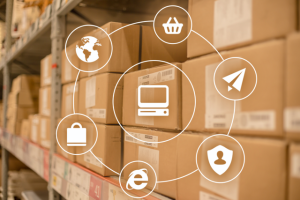Cracking the Circuit: A Guide to B2B Electronic Component Sourcing

1. Know Yourself, Know Your Parts: Define Your Needs
Here are some key aspects to consider:
2. Casting a Wide Net: Choosing the Right Supplier
Harness the power of online research: Search engines and industry-specific websites such as Digi-Key, Mouser, or simply click here to send a list of inquiries and get the lowest-priced quote within 24 hours.
Embrace the spirit of networking:
Don’t underestimate the power of industry events, conferences and online forums. Connect with fellow engineers and entrepreneurs to discover and exchange recommendations for trusted resources. Hearing first-hand experiences can provide valuable insights into distributor performance and reliability.
Leverage the wisdom of your peers:
Reach out to colleagues, advisors and collaborators in your field. Ask them to recommend reputable electronics distributors they have worked with. This “word-of-mouth” approach can have a big impact when searching for a reliable sourcing partner.
Go beyond the basics:
Consider the following factors to narrow down the initial list of potential distributors:
Product mix:
Does the distributor stock a variety of components to ensure you can meet most, if not all, of your project requirements from one source?
Minimum Order Quantity (MOQ):
Some distributors have minimum order quantities, which can be a burden on smaller projects and is often the threshold for some malls. Be aware of MOQs and purchase accordingly.
Global reach: If your project includes an international presence, investigate the distributor’s global presence and delivery capabilities.
Customer Support:
Does the distributor provide strong customer support before, during and after the purchase? Reliable technical support is invaluable when troubleshooting or seeking product instructions.

3. Request a quote: Get the best price and start a new chapter in purchasing
1. Clearly Define Your Requirements:
2. Engage Multiple Suppliers:

4. Placing Your Order: Embarking on the Procurement Journey
To Ensure a Seamless Process:
- Finalize Order Details:
- Confirm order quantity, component specifications, and any special requirements with the supplier.
- Reiterate agreed-upon pricing, payment terms, and delivery schedule.
- Provide accurate shipping and billing information.
- Issue a Purchase Order (PO):
- Create a formal PO document outlining all agreed-upon details.
- Include PO number, order date, project name, and your company information.
- Clearly list components, quantities, and pricing.
- Specify the delivery address and contact information.
- Outline payment terms and any special instructions.
- Communicate Effectively:
- Share the PO promptly via email or their preferred communication channel.
- Maintain open communication throughout the order fulfillment process.
- Inquire about order status updates and track shipments.
- Address any discrepancies or issues promptly to ensure smooth fulfillment.
Leveraging HK EQGOO LIMITED’s Streamlined Ordering Process:
HK EQGOO LIMITED provides a user-friendly online real-time inquiry platform. Their experienced team is dedicated to ensuring a smooth and efficient ordering experience:
- Simplified Online Ordering: Create and manage orders seamlessly through their intuitive online platform.
- Real-Time Order Tracking: Track the status of your orders from placement to delivery.
- Responsive Customer Support: Their dedicated support team is readily available to assist with any order-related queries or concerns.
Remember: Effective order management is crucial for project success. By carefully finalizing order details, issuing clear POs, and maintaining open communication with suppliers, you can ensure timely delivery of the components you need to keep your project on track.

5. Receiving and Inspection: Guaranteeing Project Quality
Upon receiving your order, it’s essential to meticulously inspect the components to ensure they meet your project’s exacting standards. Think of it as the final quality control step before integrating the components into your project. Here’s what you should do:
- Verify Delivery:
- Check the shipment against the packing slip to confirm you’ve received all ordered components in the correct quantities.
- Inspect the packaging for any signs of damage that might have compromised the components during transportation.
- If any discrepancies or damage are found, document them clearly and notify the supplier immediately.
- Conduct Visual Inspection:
- Visually examine each component for any physical defects, such as scratches, dents, or signs of improper handling.
- Ensure all components match the descriptions and specifications outlined in your Bill of Materials (BOM).
- Compare markings and labels on the components to verify their authenticity and compliance with your project requirements.
- Leverage HK EQGOO LIMITED’s Quality Assurance:
HK EQGOO LIMITED prioritizes quality and maintains rigorous quality control procedures throughout their supply chain. By partnering with them, you gain access to:
-
Stringent Quality Checks: All components undergo thorough inspections before being shipped, minimizing the risk of receiving defective parts.
- Dedicated Support: Their customer support team is readily available to address any quality concerns and assist with returns or replacements if necessary.
-
Perform Functional Testing (if applicable): For critical components or projects with strict performance requirements, consider conducting functional testing to verify their electrical and operational characteristics. This can involve using specialized test equipment or collaborating with a testing service provider.
-
Maintain Detailed Records: Document your inspection process, including any discrepancies or issues identified. Keep these records for future reference and potential warranty claims.
Remember: A thorough receiving and inspection process is a safeguard against project delays and potential performance issues. By carefully examining your components and leveraging the quality assurance measures offered by reliable suppliers like HK EQGOO LIMITED, you can ensure your project is built with high-quality components, setting the stage for success.

Conclusion
By following this comprehensive guide, you’ll be equipped to navigate the world of B2B electronic component sourcing with confidence. Remember, a successful procurement process hinges on careful planning, effective communication, and establishing strong partnerships with reliable suppliers. With the right knowledge and approach, you can secure the high-quality components needed to bring your electronic projects to life.
